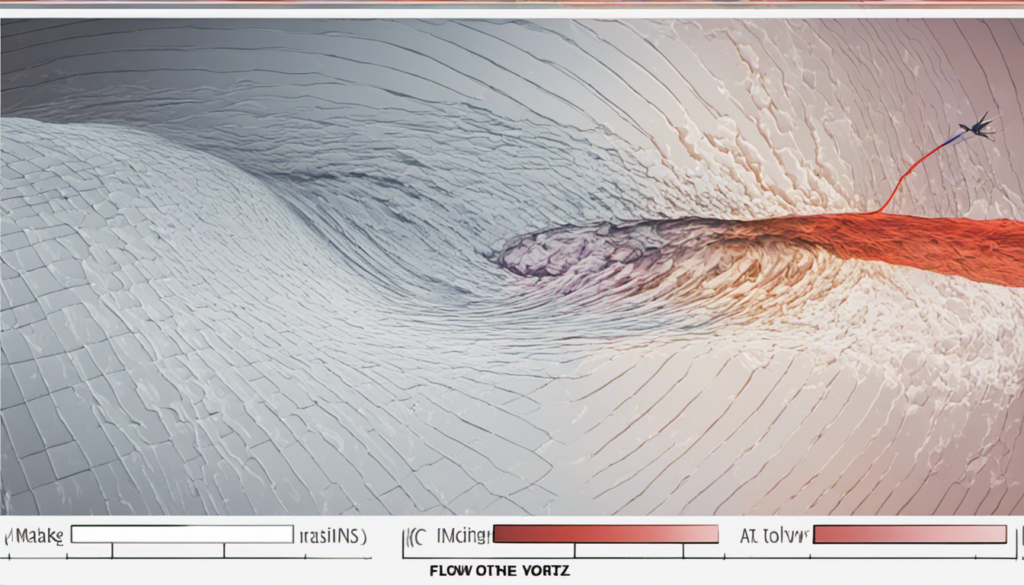A Conceptual Look at Economic Models Inspired by the Fluid Dynamics of Vortices
Introduction
Economic models have long been the cornerstone of understanding and predicting the behavior of financial systems. These models aim to capture the complex interactions and dynamics that shape the circulation and distribution of resources in an economy. In recent years, there has been a growing interest in exploring the similarities between economic models and the fluid dynamics of vortices.
This article will delve into this conceptual connection, discussing how the principles of fluid dynamics can offer valuable insights into economic models. By emphasizing circulation and resource distribution, we can gain a deeper understanding of economic systems and potentially uncover new possibilities for optimizing resource allocation.
The Dynamics of Vortices in Economic Models
Fluid dynamics studies the motion of fluids, such as liquids and gases, and the forces that act upon them. Vortices, in particular, are fascinating phenomena observed in a wide range of natural and man-made systems, from hurricanes to whirlpools and even in the flow of economic resources.
Similar to how vortices exhibit circulation patterns, economic systems also demonstrate a continuous flow and redistribution of resources. This can be seen in the movement of capital, labor, and goods within and between economies. By examining the dynamics of vortices, we can develop new approaches to better understand and model these resource flows.
Table 1 provides a comparison between the fluid dynamics of vortices and economic models:
| Fluid Dynamics of Vortices | Economic Models |
|---|---|
| Balancing of forces within the vortex | Equilibrium between supply and demand |
| Circulation and energy transfer | Flow of capital and goods |
| Vortex interactions and merging | Economic integration and mergers |
Applying Vortex Dynamics to Resource Distribution
One key aspect of economic models inspired by vortex dynamics is the emphasis on resource distribution. Fluid dynamics teaches us that vortices can exhibit different characteristics depending on the distribution of mass, angular momentum, and energy. The same principles can be applied to economic systems to analyze the allocation of resources.
One practical example of this application is seen in the field of agro-fintech innovations. These innovations leverage technological advancements to optimize the distribution of agricultural resources, such as seeds, fertilizers, and machinery. By understanding the dynamics of resource distribution in the form of vortices, agro-fintech innovators can develop more efficient and sustainable models to ensure optimal resource allocation.
Table 2 highlights the key elements of applying vortex dynamics to resource distribution in agro-fintech:
| Vortex Dynamics | Agro-Fintech Innovations |
|---|---|
| Resource balancing within the vortex | Optimized distribution of agricultural resources |
| Circulation and energy transfer in the vortex | Efficient routing and logistics for resource delivery |
| Vortex interactions and merging | Collaboration and synergy among different players in the agricultural value chain |
Exploring the Potential of Vortex-Inspired Economic Models
The application of vortex dynamics to economic models opens up exciting possibilities for innovation and optimization in various sectors. For example, tactile digital wallets, as discussed in this article, leverage the principles of vortices to create seamless and intuitive user experiences for financial transactions.
In addition, quantum financial systems, as explored in this article, take inspiration from quantum physics and vortex dynamics to build secure and efficient financial infrastructures that are resistant to hacking and tampering.
By embracing the concept of vortices and their relevance to economic systems, we can reimagine traditional economic models and design more robust and adaptive frameworks. This can lead to improved resource allocation, reduced inefficiencies, and ultimately, a more resilient and sustainable economy.
Conclusion
In conclusion, the conceptual connection between economic models and the fluid dynamics of vortices provides a fresh perspective on understanding and optimizing resource circulation and distribution. By borrowing insights from the study of vortices, we can develop more accurate and adaptable economic models and explore innovative solutions for resource allocation.
As we continue to explore the potential of vortex-inspired economic models, it is important to remember that these models are not meant to be a perfect representation of reality. They are, however, valuable tools for analyzing and improving our understanding of economic systems. By combining diverse disciplines such as fluid dynamics and economics, we can push the boundaries of knowledge and create new opportunities for economic growth and stability.




